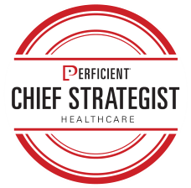While all of the data-as-information, content, and knowledge points so far are relevant, the governance model has little value if people don’t know how to access, how to interpret, and ultimately how to use the core,data and its embedded information. This is where organizational change management (OCM) plays a key role.
 Data’s value lies with people engaging with it. Change management, and its underlying methodologies, is about ensuring users and key stakeholders are ready, willing, and able to work in new ways, leveraging new tools and processes appropriately. It’s important to understand that user adoption cannot simply be assumed. Just because you tell someone that you have new ways of working doesn’t equate to people actually doing what you want or to them even knowing what to do. Change is hard, and change occurs one person at a time.
Data’s value lies with people engaging with it. Change management, and its underlying methodologies, is about ensuring users and key stakeholders are ready, willing, and able to work in new ways, leveraging new tools and processes appropriately. It’s important to understand that user adoption cannot simply be assumed. Just because you tell someone that you have new ways of working doesn’t equate to people actually doing what you want or to them even knowing what to do. Change is hard, and change occurs one person at a time.
There are many methodologies for enacting and sustaining change within an organization. And while this guide won’t go into detail on any one of them, it’s important to recognize that whatever approach is utilized, it must be both pragmatic and iterative. OCM is not fly-by-the-seat-of-yourpants work; it must be able to be reflexive to changing conditions (scope, data availability, stakeholder dispositions, etc.).
Moreover, when implementing a new data strategy, different stakeholders and users will be impacted in different ways. The OCM approach, both strategic and tactical, must be able to address each “group” and speak to them in personally meaningful ways in order to get the engagement and adoption desired. From there, a robust communication and training strategy can be crafted and implemented, preparing users for working with the new governance model upon implementation and going forward.
This blog was co-authored by Mark Steinbacher and Priyal Patel.
To learn more about the rebirth of governance in healthcare, and exploring the trends and impact on patients and organizational operations, you can download the guide below.

